Using Digital Health to Help Doctors Manage Blood Pressure More Easily and Equitably
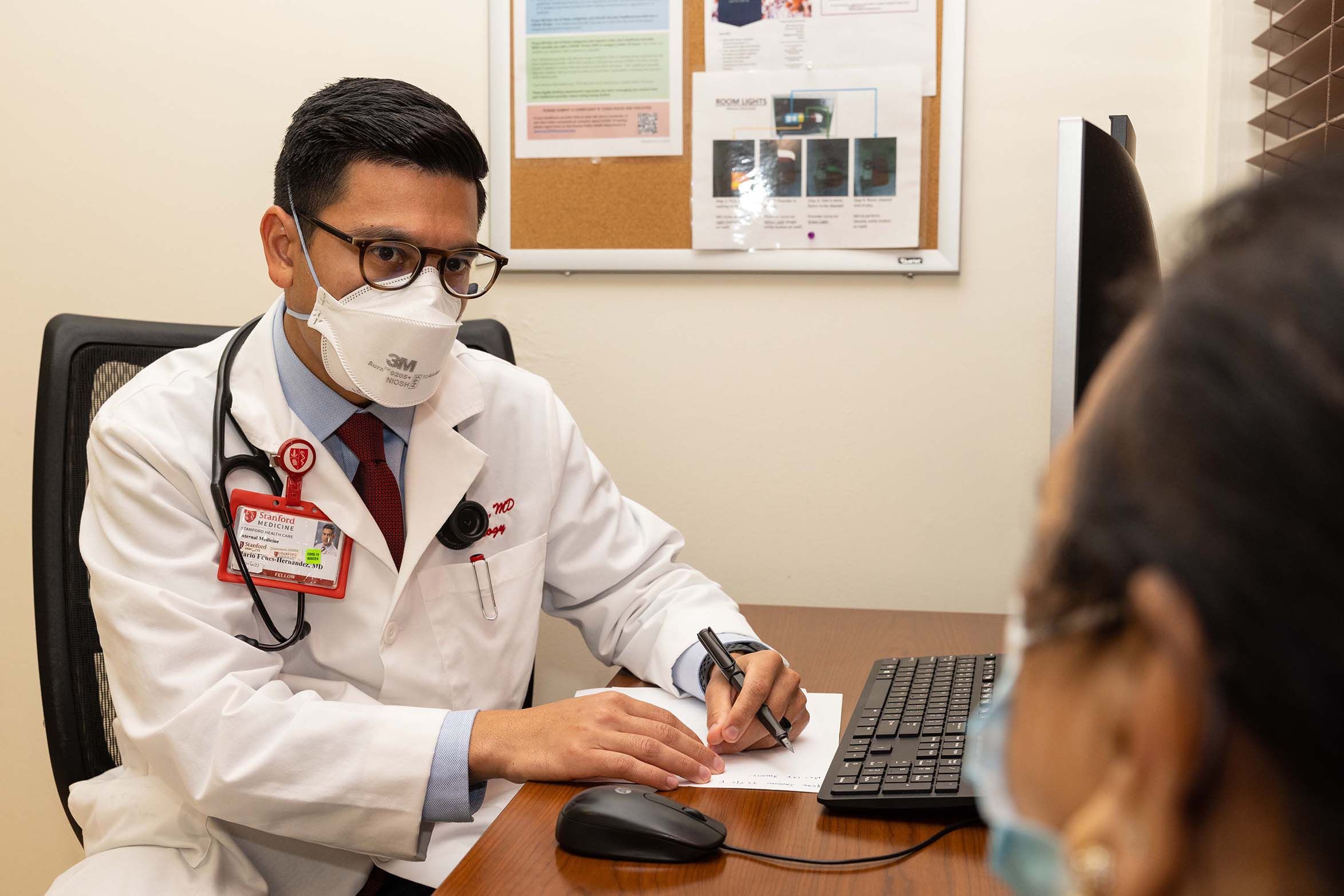
Using Digital Health to Help Doctors Manage Blood Pressure More Easily and Equitably
If you don’t have high blood pressure, you probably have family, friends, colleagues, and acquaintances who do. Nearly half of all adults in the United States struggle with hypertension, and only one in four has their condition under control. Managing blood pressure often requires ongoing trial and error on the part of both clinicians and patients, making it difficult to fully treat with only occasional, short medical appointments.
To solve that problem, Stanford clinicians have designed a streamlined system that helps primary care physicians easily and quickly adjust their patients’ medications based on at-home blood pressure readings. The team, funded by a $2.5 million American Heart Association grant to Stanford Medicine’s Center for Digital Health in 2020, found that the new system could reduce patients’ blood pressure in a small pilot study. Now, they’re enrolling hundreds more patients in a larger clinical trial.
Their new program automatically calculates a two-week average blood pressure. If, at any point, that average blood pressure rises above a chosen threshold, the clinician receives a notification — along with information on the patient’s other medications, their allergies, and the preselected list of hypertension drugs, all in one place in the electronic health record. With a few clicks, the physician can order a new, adjusted prescription for the patient.
“What we’re trying to do with this project is to improve the way we monitor blood pressure,” says Division of Nephrology Chief Tara I. Chang, MD, an associate professor of medicine. “This technology has the potential to help us reach a broad community and level the playing field for typically underserved populations when it comes to hypertension.”
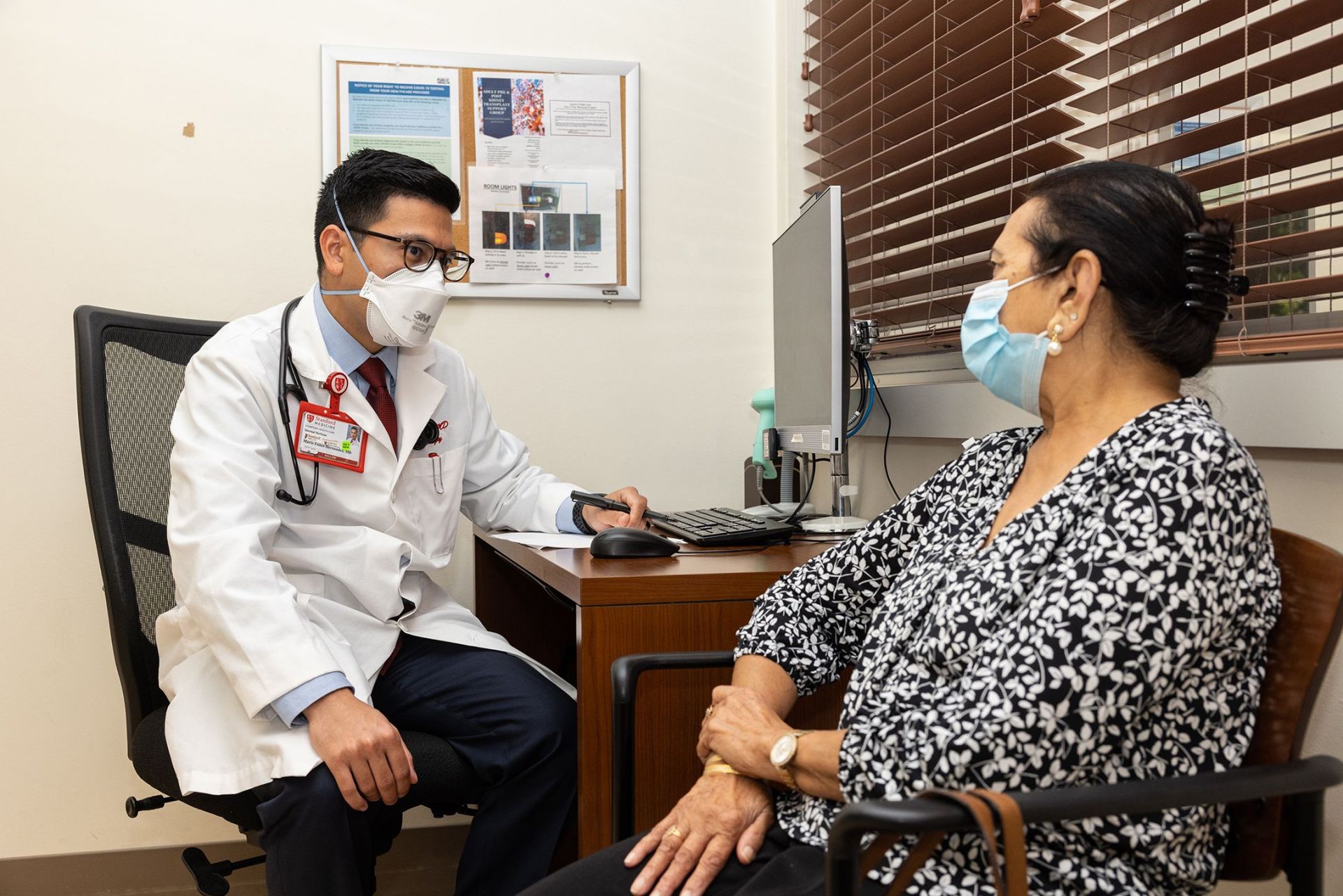
Mario Funes, MD (left), discusses hypertension with a patient.
For some patients who have the time, resources, and insurance coverage, this kind of care is possible. But for many people — including a disproportionate number of people in minority populations — it is not. This is one reason that, on average, hypertension tends to be the least well-controlled among non-Hispanic whites and most well-controlled among people with the greatest insurance coverage and access to health care.
This technology has the potential to help us reach a broad community and level the playing field for typically underserved populations when it comes to hypertension.
– Tara I. Chang, MD
This technology has the potential to help us reach a broad community and level the playing field for typically underserved populations when it comes to hypertension.
– Tara I. Chang, MD
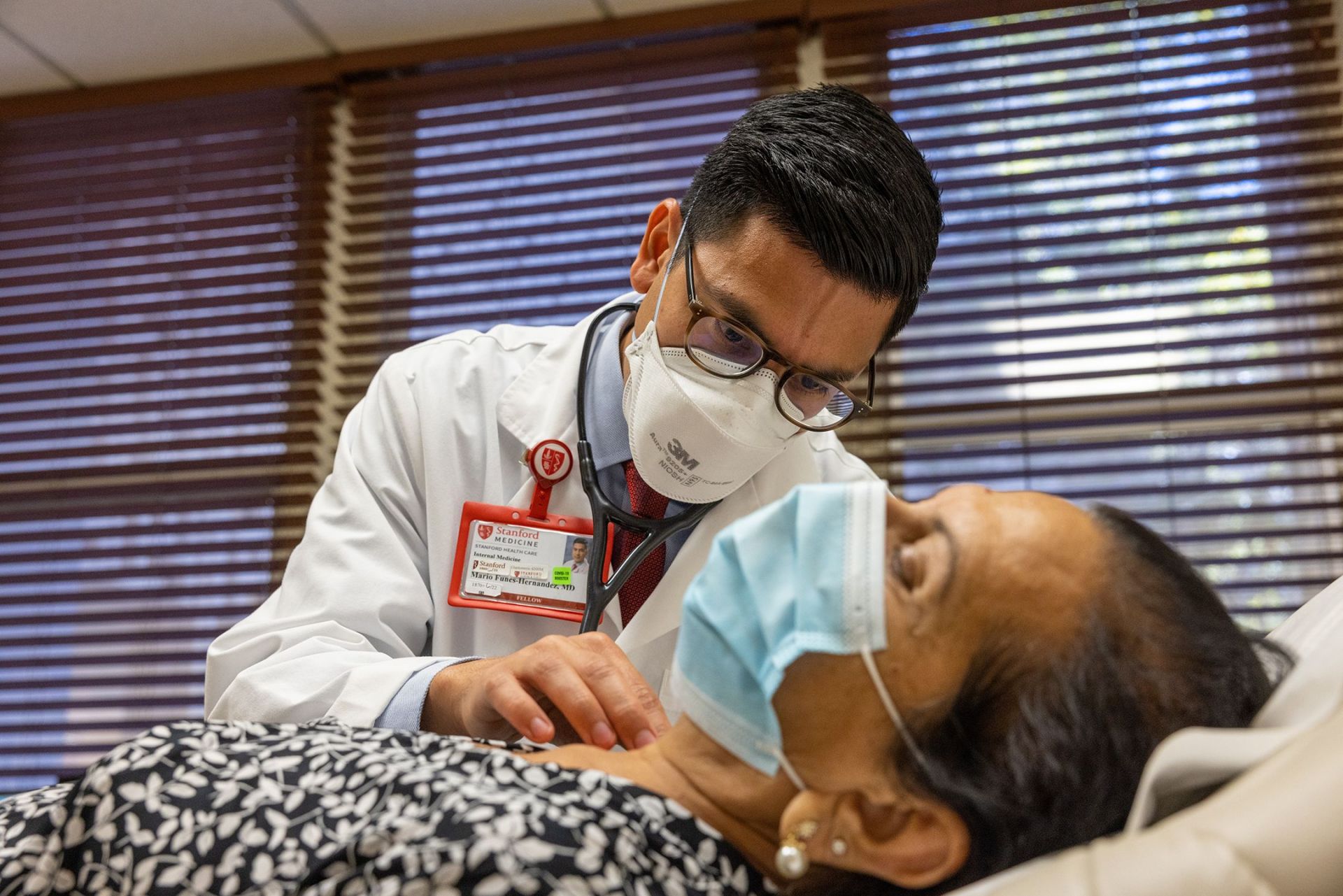
Stepping up to the Challenge
Funes, currently in his third year of nephrology fellowship, has been interested in hypertension control, and the associated disparities, since he was in medical school. So in 2020, he jumped at the opportunity to help apply for a hypertension control grant through the Center for Digital Health, with center leader Mintu Turakhia, MD, MAS, professor of medicine in the division of cardiovascular medicine, and Paul Wang, MD, director of the Stanford Cardiac Arrhythmia Service and professor of medicine and of bioengineering. Now, Funes is a heart health tech fellow with the center, a responsibility he has to juggle alongside his clinical duties and his role as chief nephrology fellow. Since mid-2021, he’s been helping lead the effort to develop new data-driven technology to control patients’ blood pressure.
The interdisciplinary team at the Center for Digital Health wanted to make it easy for patients to track their blood pressure at home, upload the data directly to their primary care physician, and enable the physician to adjust the patient’s medications. In the past, this would have taken the clinician numerous steps — receiving an email or phone call from a patient and then accessing different electronic databases to review their medical history and other prescriptions.
“Most clinicians managing blood pressure already have a heavy burden due to the electronic health record,” says Wang. “Our insight is that by semiautomating the process, we can reduce the burden of blood pressure management, taking less effort but improving results.”
The system that the team settled on is one where a physician can preselect a list of blood pressure–lowering medications, in the order that they’d like a patient to try them. At an initial appointment, they start a patient on the first medication on the list. Then, using a blood pressure cuff and a connected smartphone app, patients track their blood pressure over the coming days and weeks.
“One value in the clinic doesn’t really tell a doctor the whole story of your blood pressure,” says Funes. “But in the past, the ability to get a longer time frame of data from patients was often unreliable; some patients might record their readings in a notebook and bring it to an appointment, but it wasn’t a streamlined process.”
Data-Driven Medicine
With the explosion of personal electronics over recent years has come the ability for people to more easily track measurements of their own health, through smartphones, watches, and other at-home devices. But using this information in the clinic has been trickier.
Some of the most successful systems to connect patient-collected data with clinicians have been for tracking blood sugar levels in people with diabetes. But none of those systems involved the same kind of decision-making tree that the Stanford team wanted to use, with customized lists of medications for each patient to try. That meant that integrating the system into Stanford’s electronic health record system, Epic, was a challenge.
Initial data on the system, though, has been positive, inspiring Funes and his colleagues to keep working. An early version of the system, tested in only a handful of patients and without the full capabilities, showed an average decrease in blood pressure of 12 mmHg for those who used it. That’s a big enough difference to push some patients from an at-risk, high blood pressure reading to a healthier zone.
Now, the researchers are launching the full-scale program in a clinical trial that aims to enroll 600 to 800 patients. They’ll collect data on how clinicians and patients like the system and how well it works at reducing blood pressure.
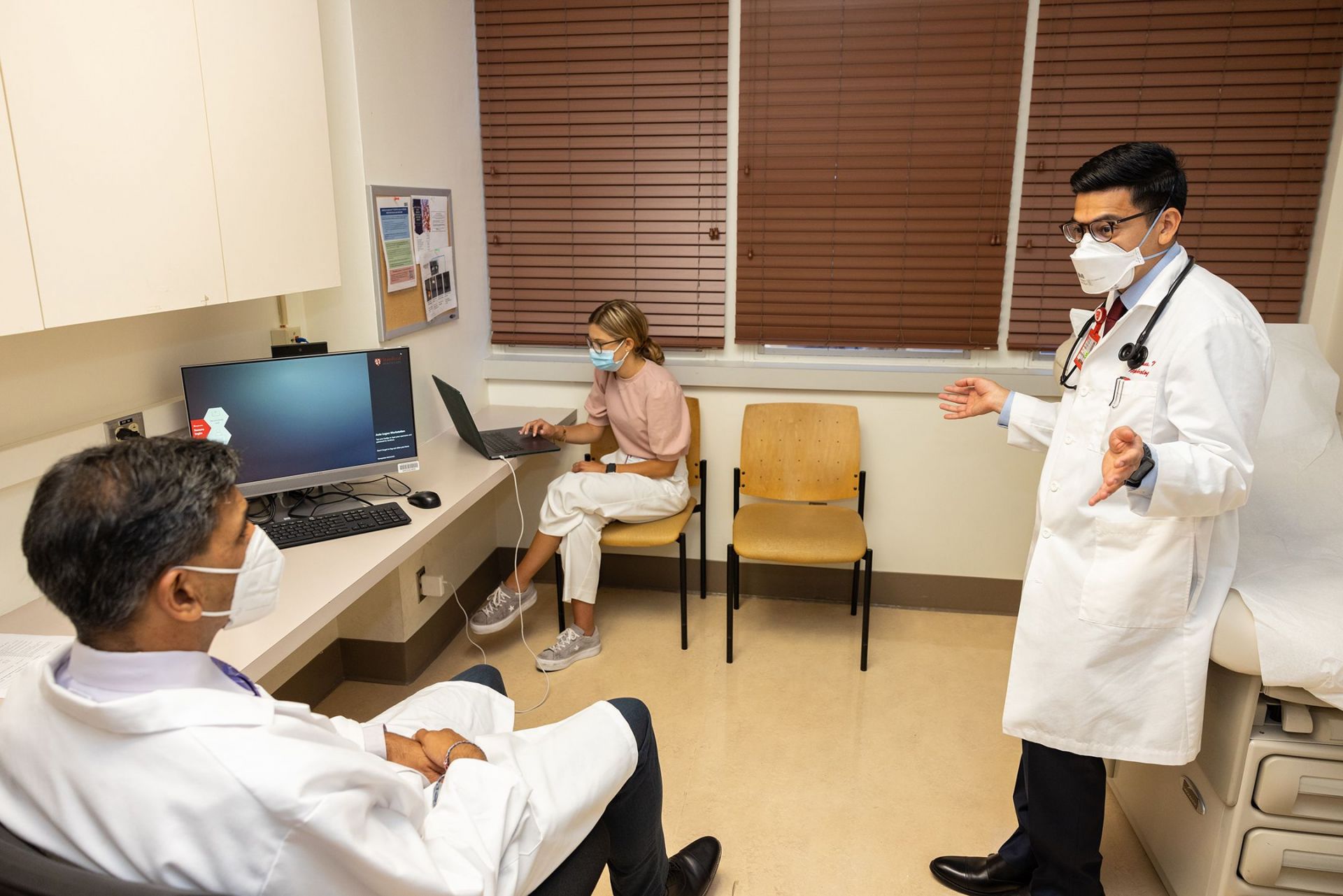
“For a whole host of chronic diseases, I think this kind of digital management is the future.”
– Mario Funes, MD
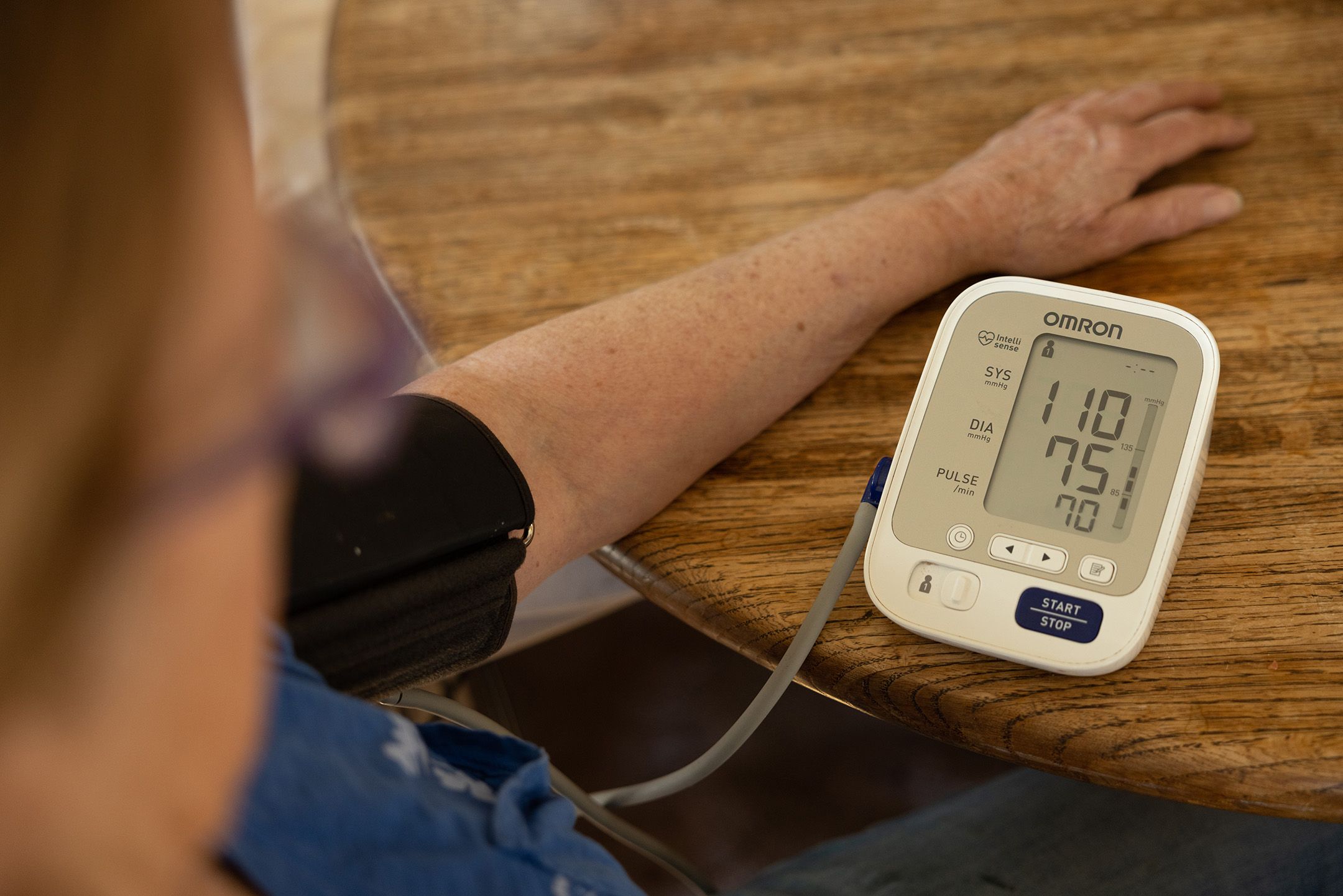
“Some digital solutions create a separate workforce to manage chronic conditions,” adds Wang. “Although some of these efforts may be successful, they remove patient care from the primary care team, eliminating opportunities to better integrate care and save resources. Integrated approaches like ours aim to reduce disparities of care rather than increasing them.”
The Stanford Center for Digital Health already has other initiatives aimed at treating conditions as diverse as heart health, atrial fibrillation, migraines, and hyperactivity. The award from the American Heart Association is part of a $14 million grant to several institutions around the country for work on reducing health care disparities with the help of technology. In addition to Funes, the grant is funding fellowships for three Stanford cardiology trainees working on heart failure management. As virtual health moves mainstream and digital apps become routine tools in patient care, these fellows will continue to take the lead in innovating creative new ways for technology to help patients and doctors alike.
